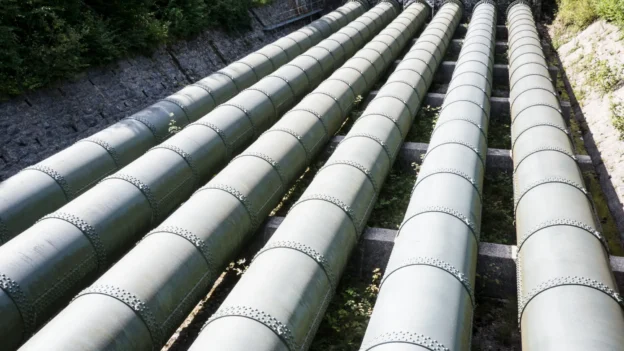As the world accelerates its transition toward cleaner, more sustainable energy sources, the infrastructure supporting this shift must evolve just as quickly. Among the most prominent developments in this transition is the increasing role of carbon dioxide (CO₂) transport and injection—a cornerstone of the Carbon Capture, Utilization, and Storage (CCUS) process.
These emerging systems are essential for achieving net-zero targets. They allow CO₂ to be captured from industrial processes or directly from the atmosphere, then transported—often via pipelines or ships—and injected deep underground for long-term storage. But while CO₂ capture may offer environmental benefits, it also presents complex technical challenges that engineers must address, especially concerning corrosion control and materials selection.
The corrosion challenge in CO₂ systems
CO₂ captured from industrial sources, such as power plants and cement plants, can be highly corrosive. Impurities like water, hydrogen sulfide, or nitrogen and sulfur oxides can react to form aggressive products like strong acids. This poses a serious threat to pipeline integrity. Various impurities and operating conditions make CO₂ transport a complex corrosion engineering challenge. As infrastructure ages or scales up, the risks multiply.
Introducing AMPP guide 21532-2023
To help industry professionals meet these challenges headon, AMPP developed and published AMPP Guide 21532-2023: Guideline for Materials Selection and Corrosion Control for CO₂ Transport and Injection. This guide is a critical resource for engineers, asset owners, and decision-makers working on CO₂ infrastructure design and maintenance.
Unlike prescriptive standards that dictate rigid approaches, AMPP Guide 21532-2023 provides flexible guidance for a variety of projects. Its purpose is to aid in the identification of operating limits and appropriate materials for pipelines and injection systems transporting CO₂. The guide encourages engineers to consider key process variables to identify a safe CO₂ specification and design systems to avoid failures. It references additional standards and documentation supporting comprehensive corrosion mitigation strategies.
A living document for a rapidly evolving field
Importantly, this guide is not meant to be the last word. Instead, it reflects the dynamic and evolving nature of this field. New materials, operating experience, and research findings continue to emerge. The guide should be seen as a starting
point—a living document that will grow alongside the energy industry. More prescriptive standards will follow as knowledge develops. AMPP is committed to leading CCUS projects in building and maintaining safe and sustainable infrastructure.
SC 26: Advancing standards for new energy frontiers
To stay ahead of rapid developments in carbon management and other energy innovations, AMPP established the Standards Committee (SC) 26—a dedicated body focused on supporting technologies related to Carbon Capture, Alternative Fuels, and Energy Storage.
SC 26 plays a central role in developing materials protection and corrosion control standards in these next-generation energy systems. The committee brings together subject matter experts across sectors to evaluate new challenges, explore innovative solutions, and create harmonized guidance that the global industry can rely on.
From managing the corrosion risks of hydrogen fuel systems to explaining the complex world of CO₂ corrosion testing, SC 26 helps chart a path forward. It bridges the gap between cuttingedge energy solutions and the reliable, safe infrastructure to make them viable.
SC 26 also fosters a collaborative, multidisciplinary environment, drawing participation from researchers, engineers, manufacturers, asset owners, and government entities worldwide. The result is a diverse community united by a shared mission: to protect the assets that will power a more sustainable future.
Why you should join the movement
SC 26 is actively inviting new participants—forward-thinking professionals who want to shape the future of energy and materials protection. Whether deeply experienced in corrosion science or just entering the field with fresh ideas, your voice can make a difference.
By joining SC 26, you’ll gain access to an invaluable network of industry leaders and technical experts. You’ll help develop standards that guide real-world projects and support emerging technologies. You’ll be at the forefront of innovation and have the opportunity to make a meaningful impact on your career and the planet.
To get involved, contact Brad Wilder, PE, CAE, Senior Director of Technical Advancement at AMPP at Brad.Wilder@ampp.org.
As the energy industry transforms, we must ensure that the materials and systems we depend on are up to the challenge. With your help, SC 26 can continue to lead in building safe, secure, and sustainable solutions for the future.
This article was developed by Brad Wilder and published as part of the fifth edition of Inspenet Brief magazine August 2025, dedicated to technical content in the energy and industrial sector.

